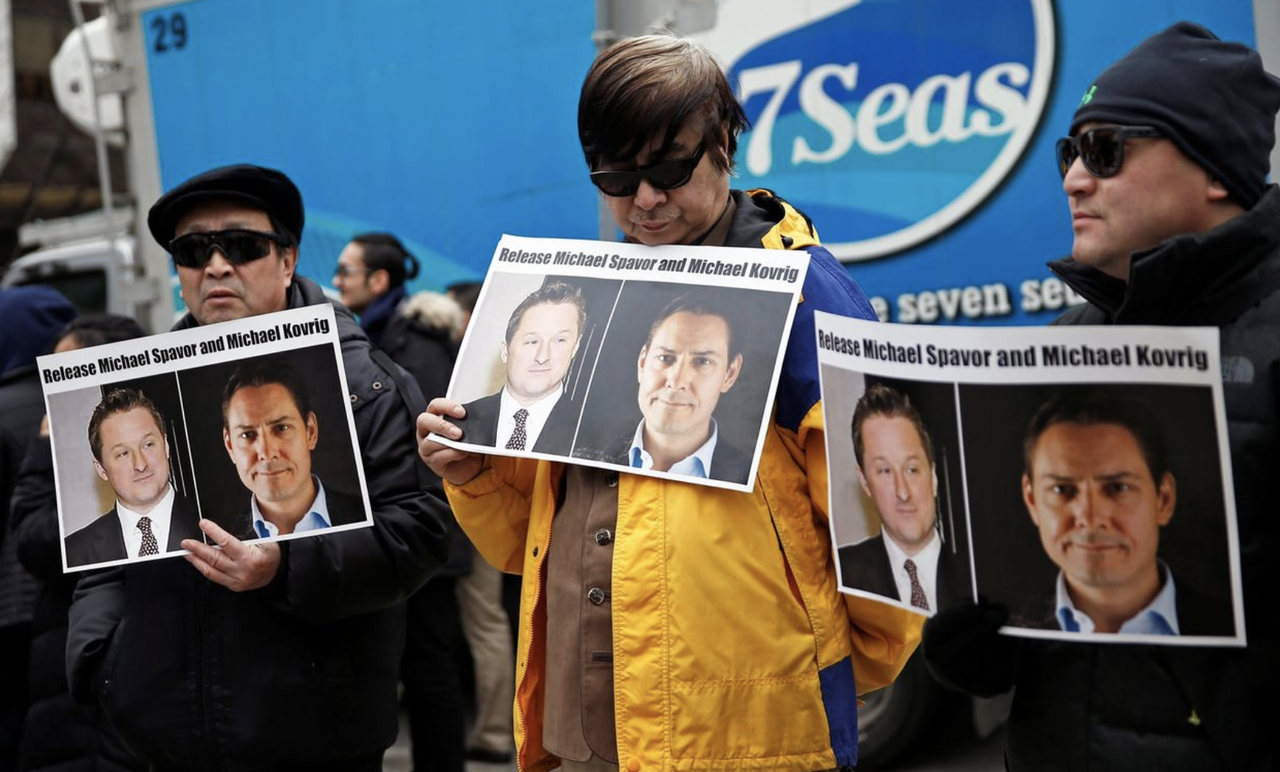Yesterday, I posted my high-level analysis of DHS v. Regents of California, the DACA case. This lengthy post will dive deeper into the weeds. I’ll presume familiarity with the facts of the case, the history of the litigation, and knowledge of basic APA doctrine.
Chief Justice Roberts’s analysis has eight major parts.
First, Roberts held that the DACA rescission is subject to judicial review. This conclusion is significant. In 2016, the Obama administration argued that DAPA itself was not subject to review because DAPA was a general non-enforcement policy. And in 2020, the Trump administration argued that the DACA rescission was not subject to review, because the rescission was also a general non-enforcement policy. (Republican and Democratic agencies agree on little but non-reviewability). But Roberts rejects both positions. He argues that DACA “is not simply a non-enforcement policy.” Why? Critically, the policy confers benefits:
The benefits attendant to deferred action provide further confirmation that DACA is more than simply a non-enforcement policy. As described above, by virtue of receiving deferred action, the 700,000 DACA recipients may request work authorization and are eligible for Social Security and Medicare. Unlike an agency’s refusal to take requested enforcement action, access to these types of benefits is an interest “courts often are called upon to protect.” Chaney. Because the DACA program is more than a non-enforcement policy, its rescission is subject to review under the APA.
Defenders of DACA have long argued that the policy is merely an act of prioritization: certain people are de-prioritized for removal. Chief Justice Roberts has killed that argument. As a result, Texas’s long-pending challenge to DACA has now cleared the reviewability hurdle. That case can proceed to the merits. These holdings were small concessions for the Court’s four liberals to pay for a favorable judgment.
Second, Chief Justice Roberts limited his review to the Duke memorandum, and disregards the Nielsen memorandum. I think this analysis is correct. The Nielsen memo added additional justifications that were not in the agency action. Roberts write:
The policy reasons that Secretary Nielsen cites as a third basis for the rescission are also nowhere to be found in the Duke Memorandum. That document makes no mention of a preference for legislative fixes, the superiority of case-by-case decisionmaking, the importance of sending a message of robust enforcement, or any other policy consideration. Nor are these points included in the legal analysis from the Fifth Circuit and the Attorney General. They can be viewed only as impermissible post hoc rationalizations and thus are not properly before us.
Judge Bates put the administration in a tough bind. They did the best they could.
Third, Roberts finds that the rescission is arbitrary and capricious. But he expressly rejects the approaches of three courts of appeals. These courts held that the Secretary was wrong to rely on the Fifth Circuit’s decision, because the Fifth Circuit was wrong. For example, the Ninth Circuit held that the Fifth Circuit erred in Texas v. U.S. Therefore, the Secretary’s analysis was arbitrary and capricious:
DACA is being implemented in a manner that reflects discretionary, case-by-case review, and at least one of the Fifth Circuit’s key rationales in striking down DAPA is inapplicable with respect to DACA. With respect for our sister circuit, we find the analysis that seemingly compelled the result in Texas entirely inapposite. And because the Acting Secretary was therefore incorrect in her belief that DACA was illegal and had to be rescinded, plaintiffs are likely to succeed in demonstrating that the rescission must be set aside. Chenery I, 318 U.S. at 94.
But Chief Justice Roberts did not adopt this approach. He did not disagree with the Fifth Circuit’s decision. He could have. That holding would have made this case much easier. To the contrary, he recited the Fifth Circuit’s analysis without any criticism whatsoever.
Does this recitation suggest Roberts agrees with Judges Smith and Elrod? Possibly. Roberts explains that Secretary Duke was “bound by the Attorney General’s legal determination” concerning Texas v. U.S. He added, “Whether DACA is illegal is, of course, a legal determination, and therefore a question for the Attorney General.” Even if the Attorney General relied on an erroneous precedent, the DHS Secretary could not have disagreed. But I am inclined to believe that Roberts endorsed the Fifth Circuit’s rationale. I’ll explain why in the next part.
Fourth, Roberts concludes that part of DACA is lawful: specifically, the power to forbear removal. The legal debate only concerned the conferral of benefits, such as work authorization. Roberts doesn’t quite say that conferring benefits is illegal. In his typical fashion, Roberts hedges on all important legal questions. The manner in which he relies on the Fifth Circuit suggests he leans that way. But it is ultimately noncommittal. I don’t think the rest of the Kagan Court would have joined a more express analysis.
Let’s walk through the Court’s discussion of the Smith/Elrod decision. Roberts explains that the “core” of the challenge involved conferring benefits.
But Duke did not appear to appreciate the full scope of her discretion, which picked up where the Attorney General’s legal reasoning left off. The Attorney General concluded that “the DACA policy has the same legal … defects that the courts recognized as to DAPA.” So, to understand those defects, we look to the Fifth Circuit, the highest court to offer a reasoned opinion on the legality of DAPA. That court described the “core” issue before it as the “Secretary’s decision” to grant “eligibility for benefits”—including work authorization, Social Security, and Medicare—to unauthorized aliens on “a class-wide basis.” The Fifth Circuit’s focus on these benefits was central to every stage of its analysis. And the Court ultimately held that DAPA was “manifestly contrary to the INA” precisely because it “would make 4.3 million otherwise removable aliens” eligible for work authorization and public benefits.
Roberts added an important footnote: forbearance from removal is separate from conferring benefits.
FN5: As the Fifth Circuit noted, DAPA recipients were eligible for Social Security and Medicare benefits because they had been designated “lawfully present.” Lawful presence is a statutory prerequisite for receipt of certain benefits. It is not the same as forbearance nor does it flow inexorably from forbearance. Thus, while deferred action recipients have been designated lawfully present for purposes of Social Security and Medicare eligibility, agencies can also exclude them from this designation, see 45 CFR § 152.2(8) (2019) (specifying that DACA recipients are not considered lawfully present for purposes of coverage under the Affordable Care Act).
Later, Roberts would fault Duke for not expressly excluding DACA recipients from the regulations for purposes of the benefits.
He explains that the essential element of DACA is forbearance from removal.
But there is more to DAPA (and DACA) than such benefits. The defining feature of deferred action is the decision to defer removal (and to notify the affected alien of that decision). And the Fifth Circuit was careful to distinguish that forbearance component from eligibility for benefits. … In other words, the Secretary’s forbearance authority was unimpaired.
Did the Fifth Circuit restrict Dukes’s power to halt deportations? No. And the failure to address that element was an error.
In short, the Attorney General neither addressed the forbearance policy at the heart of DACA nor compelled DHS to abandon that policy. Thus, removing benefits eligibility while continuing forbearance remained squarely within the discretion of Acting Secretary Duke, who was responsible for “[e]stablishing national immigration enforcement policies and priorities.” 6 U. S. C. § 202(5). But Duke’s memo offers no reason for terminating forbearance. She instead treated the Attorney General’s conclusion regarding the illegality of benefits as sufficient to rescind both benefits and forbearance, without explanation….
Roberts’s analysis resembles something of a severability framework. He assumed (and perhaps agreed) that part of DACA was unlawful: the conferral of benefits. But other parts were perfectly permissible: forbearing removal. The Secretary’s decision to halt the entire policy thus botched severability. She used a sledgehammer, rather than a scalpel. Because Dukes’s failed to properly sever the impermissible portion of the DACA memorandum, her entire rescission is arbitrary and capricious.
Think about that remedy for a moment. Perhaps the Court could have used a severability analysis for the rescission memo. That is, hold that DHS has justified the cancellation of benefits, but has not justified the cancellation of forbearance. (I privately speculated about such an outcome–let the Dreamers stay, but they can’t work). Roberts could have vacated part of the rescission memo, but left other parts intact. He didn’t. He vacated the entire memo. And why did Roberts use a sledgehammer instead of a scalpel? Because Dukes used a sledgehammer instead of a scalpel. In other words, Duke’s punishment for failing to sever DACA, was Robert’s decision not to sever the rescission memo. A delicious John Roberts blue plate special.
Sixth, Roberts grounds his severability analysis in the admin law chestnut, State Farm.
There, the National Highway Traffic Safety Administration (NHTSA) promulgated a requirement that motor vehicles produced after 1982 be equipped with one of two passive restraints: airbags or automatic seatbelts. Four years later, before the requirement went into effect, NHTSA concluded that automatic seatbelts, the restraint of choice for most manufacturers, would not provide effective protection. Based on that premise, NHTSA rescinded the passive restraint requirement in full.
We concluded that the total rescission was arbitrary and capricious. As we explained, NHTSA’s justification supported only “disallow[ing] compliance by means of ” automatic seatbelts. It did “not cast doubt” on the “efficacy of airbag technology” or upon “the need for a passive restraint standard.” Given NHTSA’s prior judgment that “airbags are an effective and cost-beneficial lifesaving technology,” we held that “the mandatory passive restraint rule [could] not be abandoned without any consideration whatsoever of an airbags-only requirement.”
Roberts then applies this framework to the DACA rescission:
While the factual setting is different here, the error is the same. Even if it is illegal for DHS to extend work authorization and other benefits to DACA recipients, that conclusion supported only “disallow[ing]” benefits. It did “not cast doubt” on the legality of forbearance or upon DHS’s original reasons for extending forbearance to childhood arrivals. Thus, given DHS’s earlier judgment that forbearance is “especially justified” for “productive young people” who were brought here as children and “know only this country as home,” the DACA Memorandum could not be rescinded in full “without any consideration whatsoever” of a forbearance-only policy, State Farm.
Dukes’s flaw was rescinding DACA “in full.” What should she have done instead? Roberts offers a proposal in a footnote:
DHS could have addressed the Attorney General’s determination that such benefits were impermissible under the INA by amending 8 CFR § 1.3 to exclude DACA recipients from those benefits without rescinding the DACA Memorandum and the forbearance policy it established. But Duke’s rescission memo shows no cognizance of this possibility.
Dukes’s failed to address this partial-illegality, and the precise remedy Roberts conjured up.
The SG tried to preempt this point in his reply brief. DOJ was obviously worried about this anti-saving construction:
The Government acknowledges that “[d]eferred action coupled with the associated benefits are the two legs upon which the DACA policy stands.” Reply Brief 21. It insists, however, that “DHS was not required to consider whether DACA’s illegality could be addressed by separating” the two. Ibid. According to the Government, “It was not arbitrary and capricious for DHS to view deferred action and its collateral benefits as importantly linked.”
No such luck.
Perhaps. But that response misses the point. The fact that there may be a valid reason not to separate deferred action from benefits does not establish that DHS considered that option or that such consideration was unnecessary.
In short, DHS is to be faulted for not considering a more narrowly tailored way to accomplish their goal. I framed that test quite deliberately. Roberts’s test resembles strict scrutiny. Roberts applied an over-inclusiveness standard to the arbitrary and capricious standard. Indeed, it is even stricter than strict scrutiny: the failure to anticipate the precise remedy that the Chief Justice–and no one else–conjured up has rendered the action unlawful.
Indeed, this approach resembles the mirror image of the rational basis test. With rational basis review, the Court can manufacture reasons to uphold a governmental policy, even if the government did not actually entertain that justification. Roberts flips the script. He manufactures reasons to invalidate a governmental policy, even if no one–not a single judge, litigant, or even academic–considered it. Roberts moved the goal posts. No agency can possibly conceive of every possible way to address a problem.
Seventh, Roberts responds to Justice Thomas, who criticizes this severability analysis. Thomas wrote:
Even assuming the majority correctly characterizes the Fifth Circuit’s opinion, it cites no authority for the proposition that arbitrary and capricious review requires an agency to dissect an unlawful program piece by piece, scrutinizing each separate element to determine whether it would independently violate the law, rather than just to rescind the entire program.
Roberts replies:
State Farm teaches that when an agency rescinds a prior policy its reasoned analysis must consider the “alternative[s]” that are “within the ambit of the existing [policy].” Here forbearance was not simply “within the ambit of the existing [policy],” it was the centerpiece of the policy: DACA, after all, stands for “Deferred Action for Childhood Arrivals.” But the rescission memorandum contains no discussion of forbearance or the option of retaining forbearance without benefits. Duke “entirely failed to consider [that] important aspect of the problem.”
Thomas replied that State Farm does not apply in this unique context. DHS shifted positions not out of policy preferences, but because a court declared part of the policy unlawful. He wrote:
The majority has no answer except to suggest that this approach is inconsistent with State Farm. But in doing so, the majority ignores the fact that, unlike the typical “prior policy” contemplated by the Court in State Farm, DACA is unlawful. Neither State Farm nor any other decision cited by the majority addresses what an agency must do when it has inherited an unlawful program. It is perhaps for this reason that, rather than responding with authority of its own, the majority simply opts to excise the “unlawful policy” aspect from its discussion.
Thomas is right. Indeed, DHS may have not grounded the rescission solely on policy grounds because of precedents like State Farm. And policy concerns would not override reliance interests. Roberts has no response to this point. This unique case does not fit the State Farm paradigm.
Thomas drives this point home forcefully:
By requiring more, the majority has distorted the APA review process beyond recognition, further burdening all future attempts to rescind unlawful programs. Plaintiffs frequently bring successful challenges to agency actions by arguing that the agency has impermissibly dressed up a legislative rule as a policy statement and must comply with the relevant procedures before functionally binding regulated parties. But going forward, when a rescinding agency inherits an invalid legislative rule that ignored virtually every rulemaking requirement of the APA, it will be obliged to overlook that reality. Instead of simply terminating the program because it did not go through the requisite process, the agency will be compelled to treat an invalid legislative rule as though it were legitimate
Finally, Thomas also questions whether Dukes could have “severed” the forbearance element from the benefits element. In short, if DHS modified every single regulation that confers benefits on DACA recipients, the agency would run into countless APA challenges. It would never be accomplished. The far easier path is to simply rescind the root cause: the DACA policy, rather than make dozens of piecemeal changes.
The majority’s interpretation of the Fifth Circuit’s opinion is highly questionable. Because a grant of deferred action renders DACA recipients eligible for certain benefits and work authorization, it is far from clear that the Department could separate DACA’s “forbearance component” from the major benefits it conferred without running into yet another APA problem. The majority points to the fact that, under the Patient Protection and Affordable Care Act of 2010, relevant regulations exclude those receiving deferred action through DACA from coverage. But that misses the point. Those regulations were promulgated before “anyone with deferred action under the DACA process applie[d]” for those benefits. By contrast, DACA recipients have been eligible for and have received Medicare, Social Security, and work authorization for years. DHS therefore is not writing on a blank slate. Under the majority’s rule, DHS would need to amend all relevant regulations and explain why all recipients of deferred action who have previously received such benefits may no longer receive them. Alternatively and perhaps more problematically, it would need to provide a reason why other recipients of deferred action should continue to qualify, while DACA recipients should not. It thus seems highly likely that the majority’s proposed course of action would be subject to serious arbitrary and capricious challenges.
Roberts certainly knows that trying to modify dozens of regulations would be problematic. He does not seriously expect the administration to take these steps on remand. Nor did he expect the administration to revise the census form last summer. He dangles a meaningless offer of relief–one last chance!–to assuage his perverse sense of minimalism.
Eighth, Roberts also holds that Dukes failed to adequately consider reliance interests. In other words, even if Dukes jumped through hoop the fecund mind of John Roberts can concoct to survive A&C review, the memo was still inadequate. Why? Roberts has more hoops to jump through:
Had Duke considered reliance interests, she might, for example, have considered a broader renewal period based on the need for DACA recipients to reorder their affairs. Alternatively, Duke might have considered more accommodating termination dates for recipients caught in the middle of a time-bounded commitment, to allow them to, say, graduate from their course of study, complete their military service, or finish a medical treatment regimen. Or she might have instructed immigration officials to give salient weight to any reliance interests engendered by DACA when exercising individualized enforcement discretion.
No memorandum can possibly touch all the bases. It is impossible. And now, even if the agency attempts to issue a new memorandum, district courts around the country will use Roberts’s dictum as a checklist. The failure to consider and address these issues renders the rescission unlawful.
This sort of narrow tailoring exceeds strict scrutiny, the kind Roberts would not apply in any other context. Not for Free Speech. Not for substantive due process. Certainly not for the Second Amendment.
***
I sincerely hope this case is a ticket good for one ride on the John Roberts express. This framework, if taken seriously–which I do not–would make it impossible for any agency to modify an old policy that is in effect. There will always be countless ways to address reliance interests. My prediction: the DACA case will soon be treated like the APA analysis in the Census case. Another blip in administrative law that was only needed for the moment.
Of course, there may be an upside. If President Trump loses in November, his administration could rush through a package of questionable executive actions, on which people will quickly rely upon, rendering it impossible for President Biden to rescind them. I’m sure Roberts will find a way to respond in kind.
from Latest – Reason.com https://ift.tt/3fvPZpw
via IFTTT









